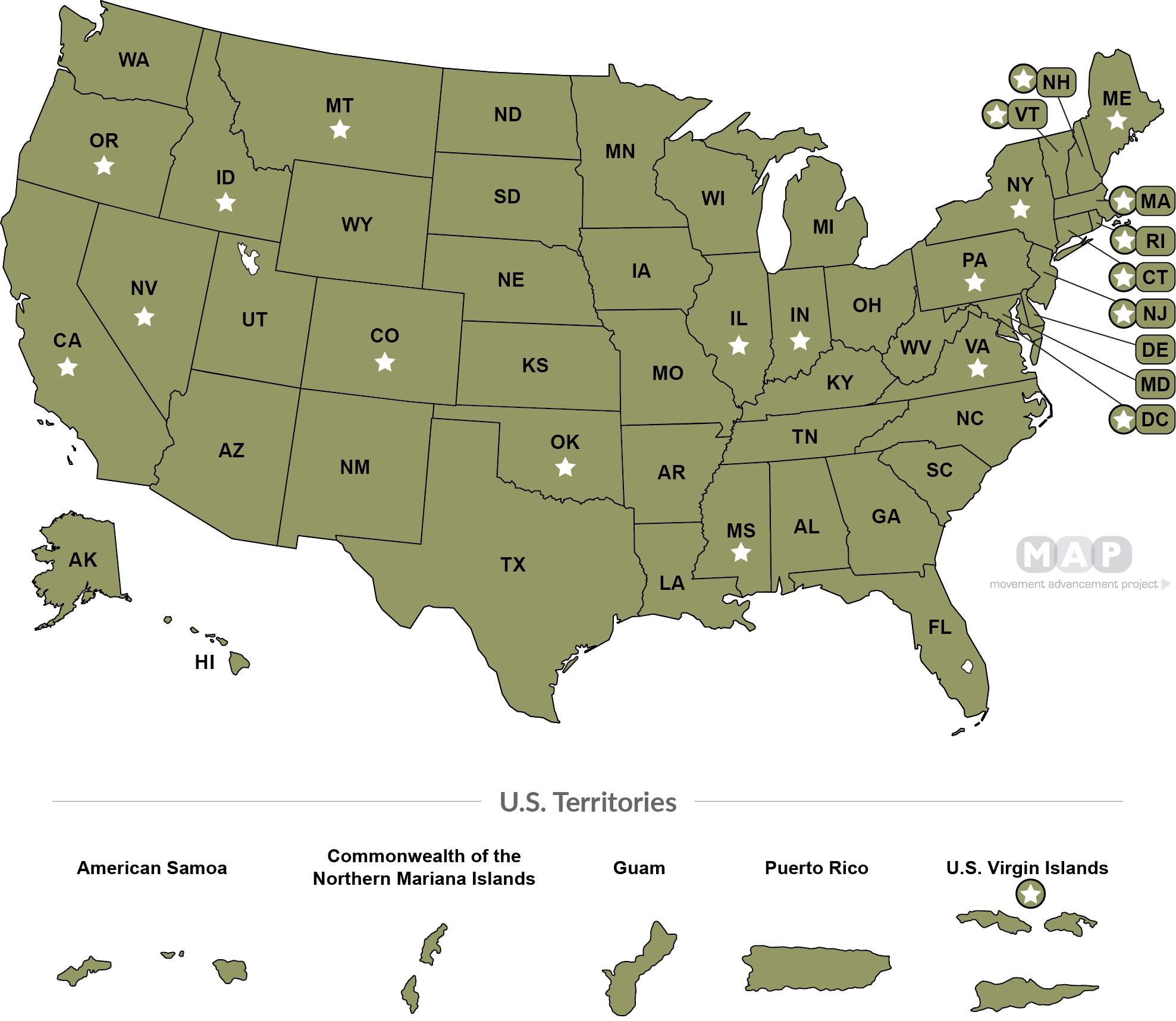Parents in legally recognized relationships can petition for stepparent adoption statewide; relies on access to marriage or relationship recognition(50 states , 5 territories + D.C.)

Parents can petition for second-parent adoption statewide, regardless of marital status (21 states , 1 territory + D.C.)
Percent of Adult LGBTQ Population Covered by Laws
*Note: These percentages reflect estimates of the LGBTQ adult population living in the 50 states and the District of Columbia. Estimates of the LGBTQ adult population in the five inhabited U.S. territories are not available, and so cannot be reflected here.
100 % of LGBTQ population live in states where parents in legally recognized relationships have access to stepparent adoption statewide
46 % of LGBTQ population lives in states where parents can petition for second-parent adoption statewide, regardless of marital status



